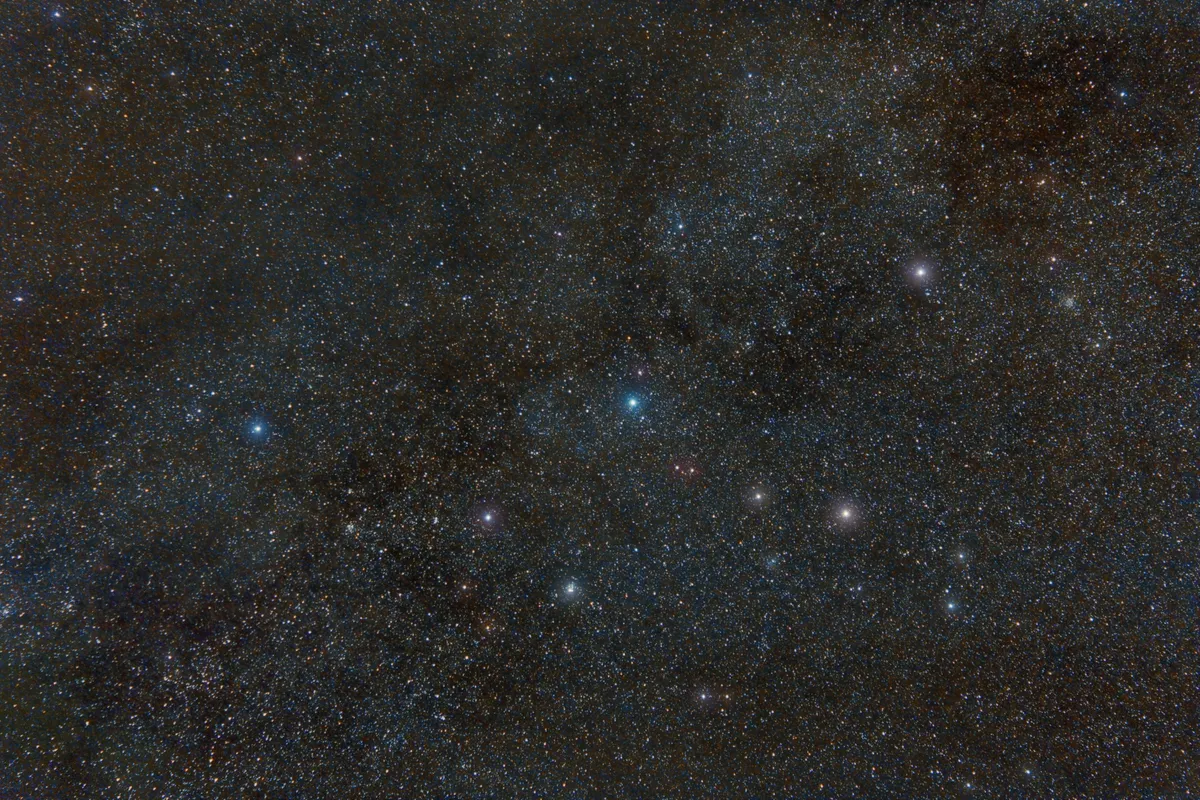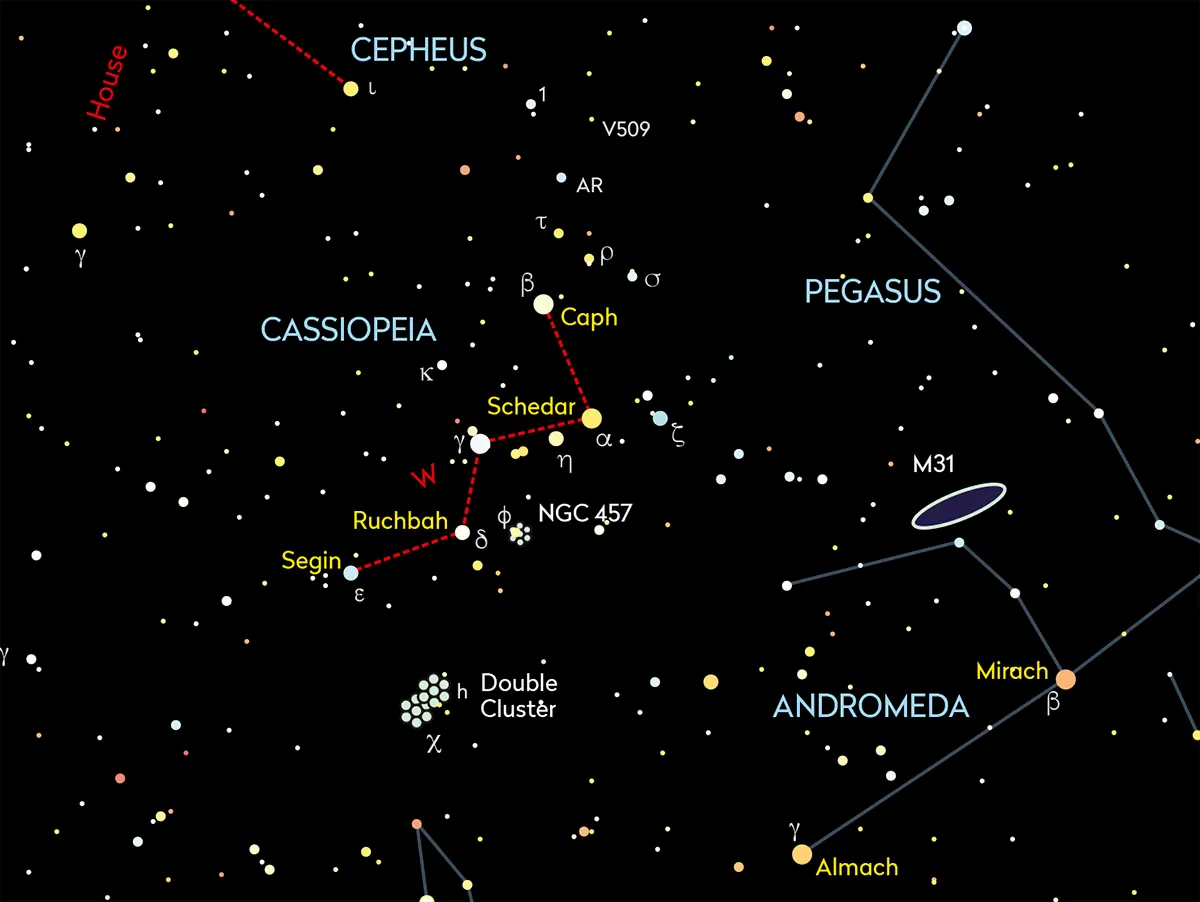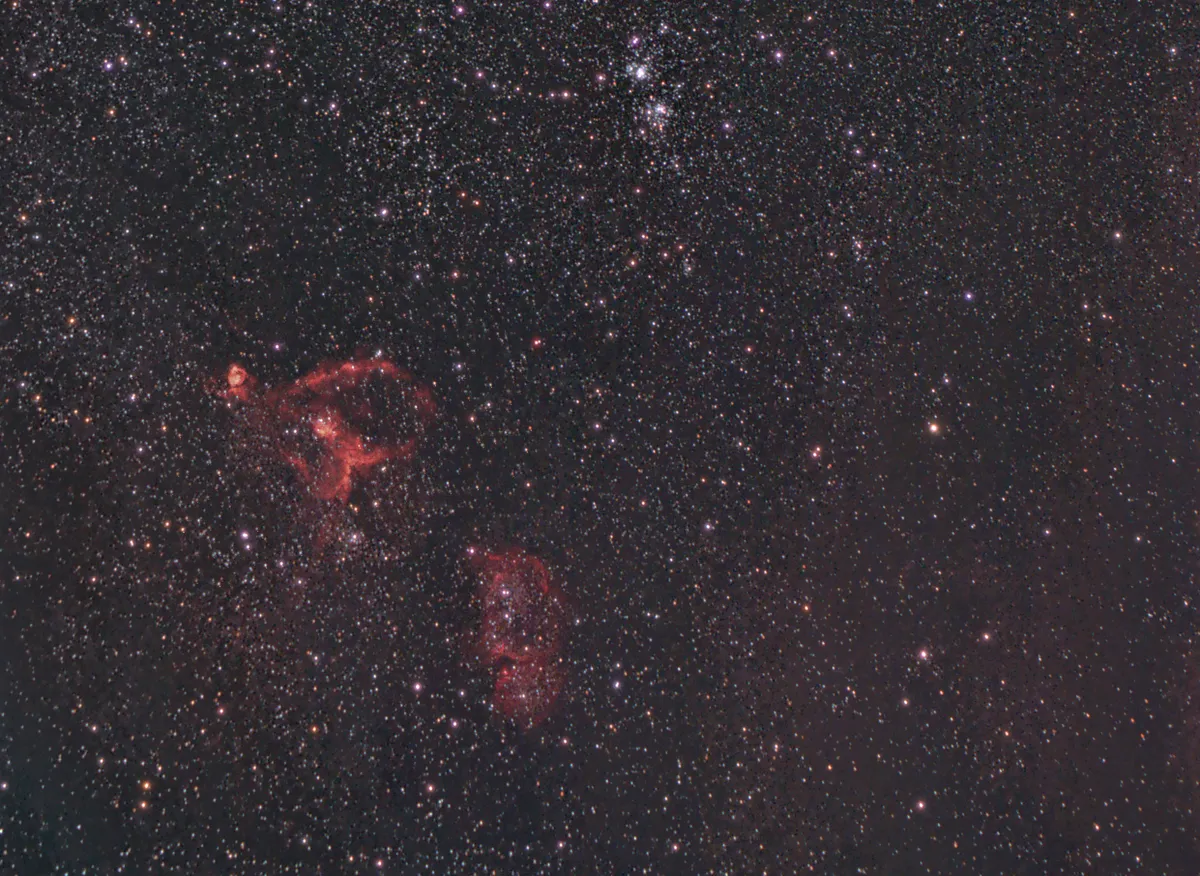The constellation Cassiopeia is named after the queen of Aethiopia in Greek mythology. Cassiopeia was the wife of King Cepheus and mother to Princess Andromeda.
Cassiopeia was sent into the sky as punishment for boasting that she and Andromeda were more beautiful than the Nereids, who were sea nymphs.
From the UK, the W-shaped constellation of Cassiopeia is one of the circumpolar constellations, meaning it never sets. Its shape is distinctive and easy to see.

How to see Cassopeia.
Being circumpolar means Cassiopeia is always visible when the sky is dark and clear. Its pattern can also be seen to do a complete rotation around the North Celestial Pole, approximately marked by Polaris (Alpha (α) Ursae Minoris).
For more on this, read our guide on how to find the North Star.
However, it’s only when at its lowest point due north that Cassiopeia appears as a W the right way up.
The constellation represents the Seated Queen and the name of the star Schedar (Alpha (α) Cassiopeiae) translates as ‘breast’, indicating its position in the heart of the Queen.

Star Schedar
Schedar appears second from the right with the W the right way up. It shines at mag. +2.2 and has a spectral type of K0 IIIa: an orange-hued (K0) luminous giant star (IIIa). Its diameter is slightly in excess of 42 times that of our own Sun.
Schedar lies 228 lightyears from the Sun, about four times farther than Caph (Beta (β) Cassiopeiae) which from Earth has a similar brightness of mag. +2.3.
Both stars are slightly variable, Schedar varying between mag. +2.20 and +2.23, Caph between mag. +2.41 and +2.36. Schedar rotates at a speed of 21km/s and takes 102 days to turn once on its axis.
This giant star has an estimated mass of five times that of our Sun and, as must be the case for higher mass stars, its burn rate is high. We can estimate Schedar’s age is in the range of 100–200 million years.
Rho Cassiopeiae, a yellow hypergiant

Rho (ρ) Cassiopeiae is a mag. +4.5 star located 2.5˚ southwest of Caph (beta (β) Cassiopeiae). This verging-on-dim star appears similar to the multitude of stars around it, but it is different.
All of the stars we can see in the night sky belong to our Milky Way.
This gravitationally bound system contains several hundred billion suns but only those in a ‘bubble’ around the Sun, about 10,000 lightyears in diameter with the Sun at the centre, can be seen individually with the naked eye as points of light.
At 8,100 lightyears distant, Rho Cas pushes that envelope.
To appear this bright at this distance Rho Cas has to be around 550,000 times more luminous than the Sun, making it one of the most luminous stars known.

As it’s so distant, Rho Cas’s light does battle with material along its line of sight, which is estimated to dim the star by up to two magnitudes.
Rho Cas is classified as a G2 or yellow hypergiant, with a spectral classification of G2Iae. G2 indicates it’s a star of similar colour and temperature to our Sun (spectral type G2V), ‘Ia’ shows it’s a luminous supergiant and ‘e’ indicates its spectrum has emission lines present.

Rho Cas is estimated to be around 450 times larger than the Sun; about 4.3 AU across. It rotates at a speed of 25km per second but being so large even at this speed, it takes it two years to complete one rotation.
It’s classed as a semi-regular variable with an apparent magnitude range of +4.1 to +6.2. In 1946 it underwent a deep minimum, attributed to the star expelling a shell of material.
This dimming seems to occur every 50 years. The last such event occurred in 2000–01.

